133rd MEETING OF THE LYNCEAN GROUP OF SAN DIEGO
Date: Wednesday, December 11, 2019, 11:30 AM
Location: Southwestern Yacht Club
2702 Qualtrough Street
San Diego, CA 92106 (Point Loma)
Speaker: Shelley Wright
Associate Professor of Physics
Center for Astrophysics & Space Sciences
UC San Diego
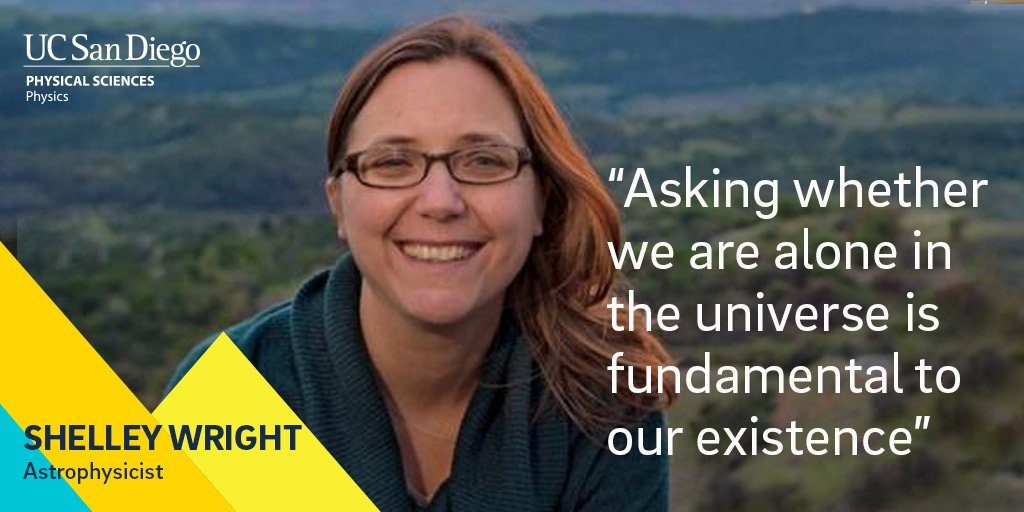
Topic: New Ways to Search for Extraterrestrial Intelligence
Abstract:
How common is life in the universe? Is there other intelligent life? Are there other communicating civilizations? These are some of the largest puzzles to understanding our place in the Universe. For over 50 years, astronomers have been conducting the search for extraterrestrial intelligence (SETI). These searches have primarily been focused at radio wavelengths, but in the last decade astronomers are thinking of new ways to search for extraterrestrial communication. I will give an overview of humanity’s quest in finding extraterrestrial intelligence, as well as future methods and programs that are on the horizon.
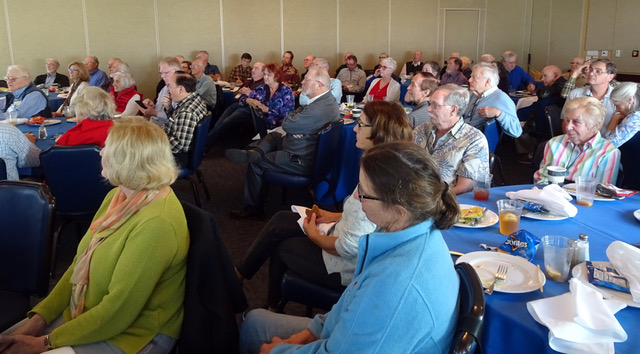
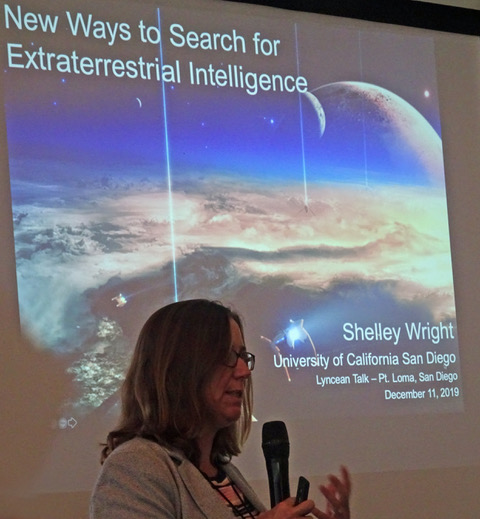
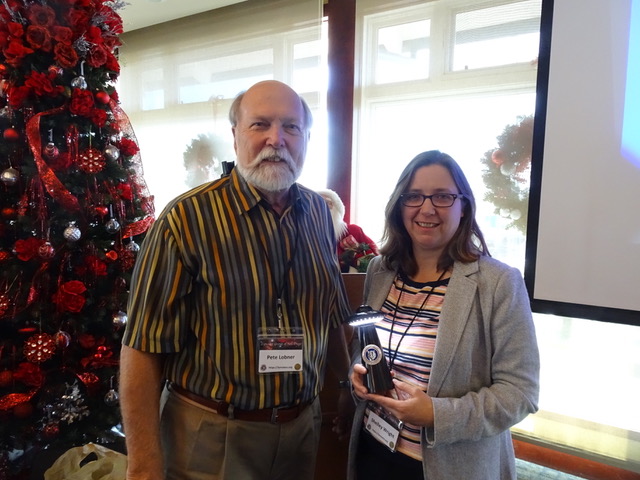
Synopsis of Shelley Wright’s presentation to the Lyncean Group of San Diego, 11 December 2019
Shelley Wright opened her talk by providing an overview of the prospects for extraterrestrial civilizations capable of communicating by a means that could be detected by another civilization. Using the Drake Equation, she showed that you would expect there to be a very large number of other civilizations capable of such communication. The Drake Equation is explained on the SETI website at the following link:
https://www.seti.org/drake-equation-index
So far, Earth-based observers have detected no sign of extraterrestrial intelligence. The Fermi Paradox asks, “Where are all the aliens?” Kurzgesagt explains the Fermi Paradox in a short YouTube video at the following video:
Shelley provided a historical overview of the limited SETI radio-telescope searches conducted to date. The practical limits on past SETI radio-telescope searches resulted in little observing time, at limited frequencies, in very small areas distributed across the sky.
Shelley’s current work with SETI is focused on a new observation paradigm, using near-infrared sensor technology to provide an all-sky, all-the-time viewing capability. The basics are explained in a 6 November 2018 article by Paul Gilster, “SETI in the Infrared,” which you can read here: https://www.centauri-dreams.org/2018/11/06/seti-in-the-infrared/
Glistner reported:
“One of the problems with optical SETI is interstellar extinction, the absorption and scattering of electromagnetic radiation. Extinction can play havoc with astronomical observations coping with gas and dust between the stars. The NIROSETI project (Near-Infrared Optical SETI) run by Shelley Wright (UC-San Diego) and team is a way around this problem. The NIROSETI instrument works at near-infrared wavelengths (1000 – 3500 nm), where extinction is far less of a problem. Consider infrared a ‘window’ through dust that would otherwise obscure the view, an advantage of particular interest for studies in the galactic plane.
Would an extraterrestrial civilization hoping to communicate with us choose infrared as the wavelength of choice? We can’t know, but considering its advantages, NIROSETI’s instrument, mounted on the Nickel 1-m telescope at Lick Observatory, is helping us gain coverage in this otherwise neglected (for SETI purposes) band.”
The NIROSETI project and the search for pulsed near-infrared signals is described on the UCSD Optical Infrared (OIR) Lab website at the following link:
https://oirlab.ucsd.edu/NIROSETI.html
Shelley described an optical observatory known as PANOSETI (Pulsed All-sky Near-infrared Optical SETI), which uses NIROSETI technology in a novel observatory configuration described on the UCSD OIR Lab website here:
https://oirlab.ucsd.edu/PANOSETI.html
The PANOSETI “…will be a dedicated SETI facility that aims to increase sky area searched, wavelengths covered, number of stellar systems observed, and duration of time monitored. This observatory will offer an ‘all-observable-sky’ optical and wide-field near-infrared pulsed technosignature and astrophysical transient search that is capable of surveying the entire northern hemisphere……. This instrument is aimed to search for technosignatures by means of detecting nano-second to second light pulses that could have been emitted, for instance, for the purpose of interstellar communications or energy transfer.”
PANOSETI applies the high-speed, near-infrared NIROSETI detectors in a small telescope module that uses an inexpensive Fresnel lens as the primary optical element. The complete PANOSETI observatory will be a geodesic dome structure with a telescope module in each tile of the dome, as shown in the following diagram.

Source: The Planetary Society, https://www.planetary.org/
Like the LIGO gravitational wave observatories, there will be two PANOSETI observatories that are separated by a distance so that each instrument can correlate (or not) the observations made by the other (see diagram, below left). As shown in the diagram below right, the processed data from PANOSETI will create a “full-sky” view as a mosaic of the overlapping data from the individual telescope modules.
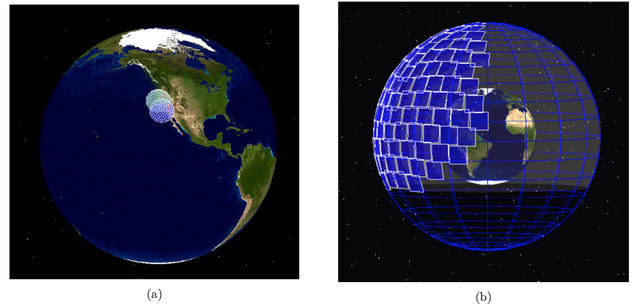
Source: The Planetary Society, https://www.planetary.org/
The PANOSETI program is collaboration between UC San Diego, Harvard University, UC Berkeley, Caltech, and SETI Institute.
For more information on the SETI radio telescope and optical infrared searches for extraterrestrial technosignatures, see the slideshow by Dan Werthimer (UC Berkeley) entitled, “Is Anybody Out There? Breakthrough Listen and SETI@home Search for ET,” which is available at the following link:
https://docplayer.net/61172443-Is-anybody-out-there-breakthrough-listen-and-search-for-et.html
To download Pete Lobner’s meeting presentation, click here:
Meeting Slides 12-11-19